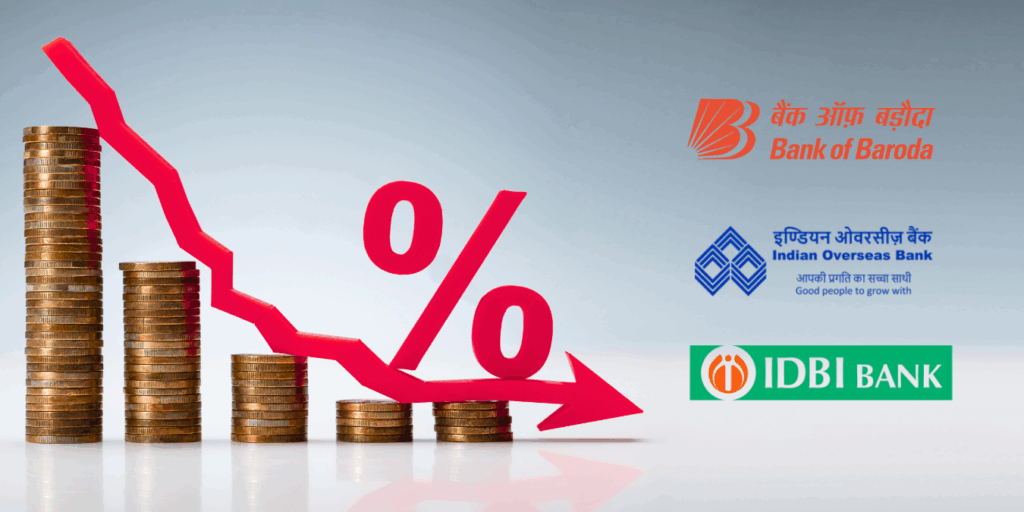
Why Your Salary or Business Income Isn’t Enough for a Loan in 2025: What Banks Really Check
The surprising truth behind loan approvals in India 2025! Beyond just income, discover the 5 hidden pillars—like your CIBIL Score, FOIR limits, and loan-to-value rules—that banks scrutinize closely amid rising costs and new RBI laws. Don’t let overlooked credit habits derail your dream. Learn what really matters now!
In India’s evolving financial landscape of 2025, securing a loan is far more complex than merely presenting a high salary or business income. While many assume that showcasing a steady paycheck guarantees loan approval, banks operate on a sophisticated evaluation system that looks beyond income alone. They scrutinize five crucial pillars that together form the foundation of loan eligibility—CIBIL score, income stability, Fixed Obligation to Income Ratio (FOIR), Loan-to-Value Ratio (LTV), and document strength. Each pillar plays a vital, often overlooked role in determining whether a loan application clears the bank’s rigorous approval process. Understanding how these factors interconnect and influence one’s borrowing power is essential for anyone looking to finance their dreams in today’s competitive credit market. This blog will demystify these hidden criteria, reveal surprising insights impacting your loan prospects, and share actionable tips to enhance your eligibility, ensuring you are well-prepared in 2025’s complex loan approval environment.
Why Income Alone Isn’t Enough for Loan Approvals
A common misconception is equating high income with loan approval certainty. However, banks adopt a nuanced, multi-dimensional evaluation, especially under the watchful eye of RBI’s 2025 guidelines promoting transparency and risk mitigation. Heightened vigilance follows growing concerns over loan defaults and fraudulent digital lending practices, compelling lenders to adopt holistic approaches that weigh multiple financial pillars collectively.
The five pillars that banks focus on are:
Pillar 1: CIBIL Score – Your Creditworthiness Indicator
The CIBIL score is a three-digit number summarizing your creditworthiness. Ranging from 300 to 900, a score above 750 is considered excellent for quick loan approvals and attractive interest rates. In 2025:
- Banks increasingly rely on the most current scores updated bi-weekly.
- Disputes in credit reports must be resolved within 7 days by lenders, ensuring accuracy.
- Minor negative fluctuations now immediately impact loan approvals, making credit management crucial.
A strong CIBIL score not only boosts eligibility but also reduces the interest rate, saving borrowers thousands over the loan tenure. Conversely, scores below 650 significantly hamper chances of loan approval or lead to loan offers with restrictive terms.
Pillar 2: Income Stability – The Steady Backbone of Repayment Capacity
Banks assess how stable and predictable your income source is. Salaried employees with steady job tenure and self-employed with established businesses (minimum 3 to 5 years vintage) stand a better chance. This analysis goes beyond the salary figure to understanding your employment type, work experience, and consistency.
Why? Because income volatility increases the risk for banks. RBI’s 2025 guidelines also push banks to verify employment stability more strictly, reducing defaults.
Pillar 3: FOIR – Fixed Obligation to Income Ratio
FOIR measures the portion of your income allocated for existing fixed debts like EMIs, credit card dues, and other loans. RBI caps total EMIs to typically 50% of your monthly income in 2025 for safer lending.
If your FOIR is too high, banks hesitate to approve additional loans because your repayment capacity is stretched thin. This is a critical hidden metric many borrowers miss, leading to unexpected rejections despite strong income.
Pillar 4: Loan-to-Value Ratio (LTV)
LTV is the ratio of the loan amount sanctioned against the value of the asset purchased or mortgaged. For home loans, the LTV often maxes at 90% in India as per 2025 norms, meaning you need a 10% down payment from your pocket alongside your income proof.
If your LTV ratio goes beyond prescribed limits, banks reduce loan amounts or increase scrutiny. This pillar protects banks from overexposing on asset-backed loans and balances borrower risk.
Pillar 5: Document Strength – Proof That Seals the Deal
Strong, genuine documentation showing identity, address, income proofs, tax returns, and business legitimacy is non-negotiable. The 2025 RBI and banks’ push for transparency has tightened documentation norms, especially for digital loans.
Weak or incomplete paperwork can cause delays or outright refusals, regardless of how good your income or credit score is.
Credit Utilisation Ratio: The Invisible Credit Score Driver
Credit utilisation ratio silently controls whether banks in India see you as “credit-smart” or “credit-stressed,” and in 2025 it matters more than most people realise. It is simply the percentage of your total credit limit that you are currently using, calculated as
Credit Utilisation = Total Outstanding on Cards / Total Credit Limit X 100
If your total card limit is ₹1,00,000 and your dues are ₹30,000, your utilisation is 30%, a level generally considered the upper comfort zone.
This one number can contribute roughly 20–30% of your CIBIL score, which means maxing out cards or regularly staying above 30–40% can drag your score down even if you pay on time. In 2025, with lenders tightening risk checks and new CIBIL rules tracking utilisation more closely, a consistently high ratio can trigger lower scores, loan rejections, or costlier interest rates, while a low ratio (ideally under 30%, and closer to 10–20%) signals strong control and boosts approval chances.
Profile & Occupation Risk: Decoding Employment Stability
Profile and occupation risk are critical but often underappreciated factors that banks consider in loan eligibility assessments. Lenders categorize occupations and professional profiles based on perceived income stability, risk of job loss, and repayment capacity. For instance, government employees, public sector workers, and individuals in reputed private firms typically enjoy lower risk status because their incomes are steady and secure. In contrast, self-employed professionals, freelancers, or those in volatile industries may be flagged as higher risk due to income unpredictability.
Banks also factor in the duration of employment and professional history. A longer, stable work tenure reduces risk perception. Conversely, frequent job changes or short work histories increase the perceived risk, potentially leading to stricter scrutiny or reduced loan amounts. This nuanced profiling helps banks mitigate defaults by lending responsibly based on occupation-related risk insights, supplementing other pillars like CIBIL score and FOIR.
Bank Statement Behaviour: The Real-time Financial Mirror
Bank statement behaviour is a crucial and often overlooked factor that banks analyse deeply when deciding loan eligibility. Beyond just verifying income deposits, lenders scrutinize spending patterns, frequency of transactions, cash inflows and outflows, and consistency in maintaining minimum balances. This behaviour offers a real-time lens into a borrower's financial discipline and stability.
For example, regular salary credits from an employer are positive signals, but sudden large cash withdrawals or irregular deposits can raise red flags. Similarly, excessive spending over income or frequent overdrafts indicate financial stress, negatively impacting the bank's risk assessment. Banks also look for consistent savings and timely repayment of other obligations reflected in the bank statements.
In 2025, with RBI and banks emphasizing digital lending and automated data analytics, detailed bank statement analysis has become more sophisticated, helping lenders detect hidden risks beyond conventional credit scores and income proofs. This makes maintaining disciplined bank account behaviour a vital step towards smoother loan approvals.
Past Loan Behavior: Your Credit Footprint
Past loan behaviour is one of the most telling indicators banks rely on when deciding loan eligibility in 2025. It reflects how responsibly a borrower has managed credit in the past, including timely repayments, defaults, loan prepayments, and even how many loans or credit facilities they currently have open.
Banks study the borrower’s repayment patterns through credit bureaus like CIBIL, which record every instance of delayed EMIs, defaults, or settlements. Positive history with full, on-time payments significantly boosts credit scores and strengthens loan approval chances. Conversely, frequent late payments, partial payments, or write-offs raise concerns about credit risk, often leading to higher interest rates or outright rejections.
With 2025’s evolving RBI regulations enhancing transparency and reporting frequency, banks have more timely and accurate data on past loan behaviour, making this pillar a powerful determinant that complements credit utilization, income stability, and documentation quality in the holistic loan approval process.
Property Verification for Home Loans: Securing Lender Trust
Property verification is a critical final pillar banks focus on for home loan approvals, ensuring the asset’s legitimacy, ownership, and valuation before disbursing funds. This process safeguards banks against fraud and future title disputes by confirming that the property is free from legal encumbrances and genuinely owned by the seller or borrower.
In 2025, property verification involves physical site visits by bank-appointed valuers, checking land records, and validating registration papers and property tax receipts. Advanced digital tools and land record digitization initiatives have accelerated this process, improving accuracy and reducing delays. Banks also verify that the property's estimated market value aligns with loan-to-value (LTV) requirements, typically allowing up to 90% LTV, ensuring borrowers have skin in the game with adequate down payments.
Thorough property verification protects all stakeholders, reinforcing trust while also helping banks manage lending risks and comply with tighter regulatory standards in India’s home loan market.
What Determines the Final Loan Amount?
The final loan amount sanctioned by banks depends on a combination of several key factors that reflect the borrower's overall creditworthiness and the risk exposure the bank is willing to take. These include income level and stability, credit score (CIBIL score), existing liabilities measured through the Fixed Obligation to Income Ratio (FOIR), and the Loan-to-Value (LTV) ratio for asset-backed loans like home loans.
Income and FOIR determine how much monthly EMI a borrower can responsibly afford, while the credit score influences the bank’s confidence in the borrower's repayment behaviour. The LTV ratio ensures the loan amount is secured against adequate collateral value, typically not exceeding 90% of property value for home loans. Additionally, banks consider past loan repayment history, bank statement behaviour, and occupation risk to finalize the loan quantum.
Thus, the sanctioned loan amount is a carefully calibrated figure balancing borrower capacity, risk, and asset security in compliance with RBI guidelines and internal bank policies.
Final Thoughts: Navigating the 2025 Loan Landscape
In today’s competitive financial market, understanding the five pillars—CIBIL Score, income stability, FOIR, LTV, and document strength—is crucial for unlocking loan approvals. Coupled with the influence of credit utilisation, occupation risk, bank behaviour, and prior credit history, these elements compose a rigorous but fair assessment system protecting both lender and borrower interests.
Digital innovation, tighter regulation, and AI-driven evaluations promise faster, smarter lending ahead. Borrowers who master these hidden levers will not only secure loans more easily but also leverage emerging opportunities with confidence. Stay informed, adapt, and position yourself ahead in India’s sophisticated credit ecosystem.

































